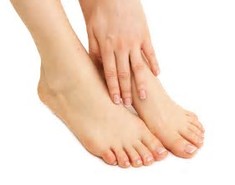Services
|
Office HoursKimball Office Hours
Monday: 8:00 a.m. - 5:00 p.m. Tuesday: 8:00 a.m. - 5:00 p.m. Wednesday: 9:00 a.m. - 6:00 p.m. Thursday: 8:00 a.m. - 5:00 p.m. Friday: Closed Saturday: by Appointment Only Sunday: Closed Sidney Office Hours Monday: 9:30 a.m. - 3:30 p.m. Gering Office Hours Tuesday: 9:30 a.m. - 3:30 p.m. |
Your feet must last a lifetime, and most Americans log an amazing 75,000 miles on their feet by the time they reach age 50. Regular foot care can make sure your feet are up to the task. With proper detection, intervention, and care, most foot and ankle problems can be lessened or prevented.
Below is a short list of foot & ankle problems that Dr. Anderson can help you with:
Balance-Boosting Footwear Tips for Older People
Balance in all aspects of life is a good thing. We work hard but make time for fun, love our children while setting boundaries, and eat healthy to enjoy a sundae on Friday night. But mental equilibrium isn't the only kind of balance that's important in life. Good physical balance can help older people avoid the debilitating and potentially life-threatening complications of a fall. Falls are the leading cause of fatal and non-fatal injuries among older people, according to the Centers for Disease Control and Prevention (CDC). In 2010, 2.3 million fall injuries sent older folks to emergency rooms; 662,000 required hospitalizations; and falls cost $30 billion in direct medical costs, the CDC says. "Preventing falls among older Americans is a top health priority, and improved balance can help reduce the risk of a fall," says Dr. Matthew Garoufalis, a podiatrist and past-president of APMA. "Proper footwear can help improve balance, especially in older people who may struggle with mobility and balance issues." When selecting a shoe to improve balance, keep these guidelines in mind:
Flip-Flops Avoid a Flip-Flop Fiasco Donning flip-flops to enjoy warm weather? Follow these dos and don'ts!
Pedicure Pointers The Dos and Don'ts for Fabulous Feet Whether you like to get a pedicure in the nail salon or at home, follow these easy Dos and Don'ts to keep your feet looking and feeling their best. Dos
Information provided via the American Podiatric Medical Association |

The Dos and Don'ts for Fabulous Feet, cont'd
Don'ts
With warmer weather coming our way soon, here are some tips for Summer Foot Care Tips for Protecting Feet from the Heat One perk of a beach-bound vacation is knowing that instead of snow soaking through your shoes or having your feet feeling toasty in sweaty boots, you can lounge happily with your toes dangling in the warm weather, shoe-free with the sand at your feet. But alas, the dream does come with its own set of tootsie troubles. "Even if you are just lying still on your back soaking up the rays, your feet are still vulnerable," says American Podiatric Medical Association member Jane Andersen, DPM. "You can seriously sunburn your feet and no matter how upscale your hotel, athlete's foot can lurk in all public pool areas." Wouldn't you rather spend time collecting sea shells than doctor's bills? No worries. There are ways to prevent these future foot predicaments so you can go back to your sun-kissed dreams and enjoy a liberated foot experience.
|
